site search
online catalog
VERY RARE CIVIL WAR U.S. ARMY ISSUE DRAWERS
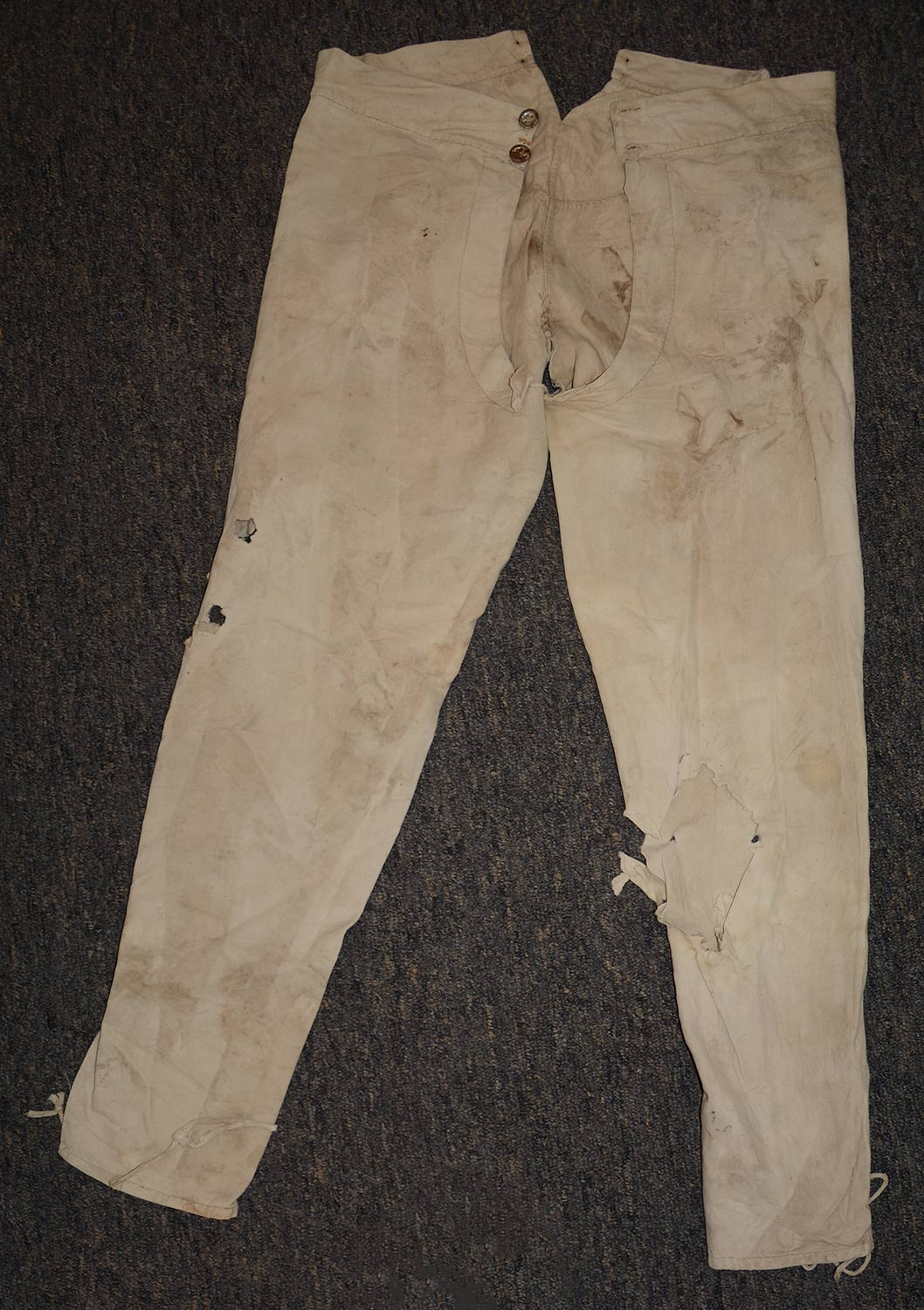
Hover to zoom

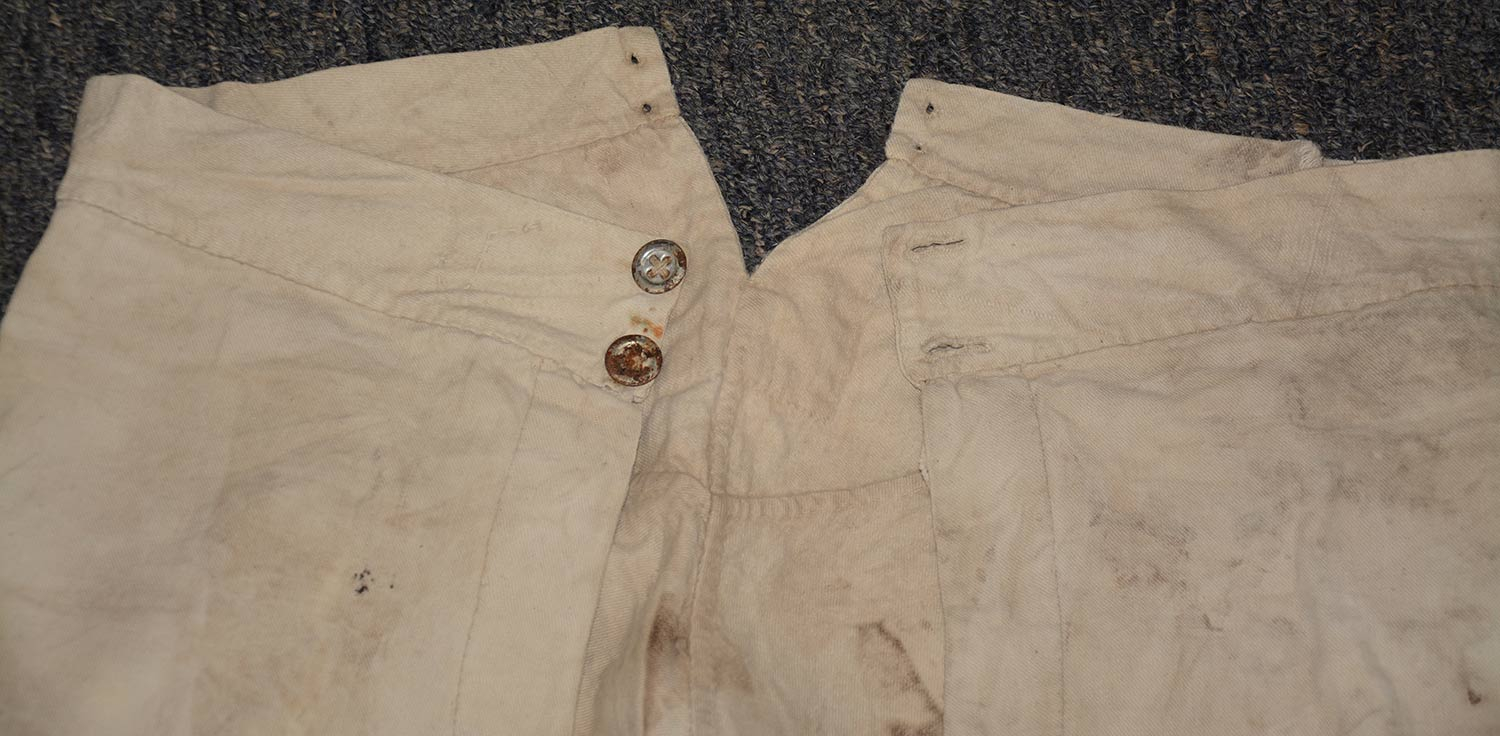
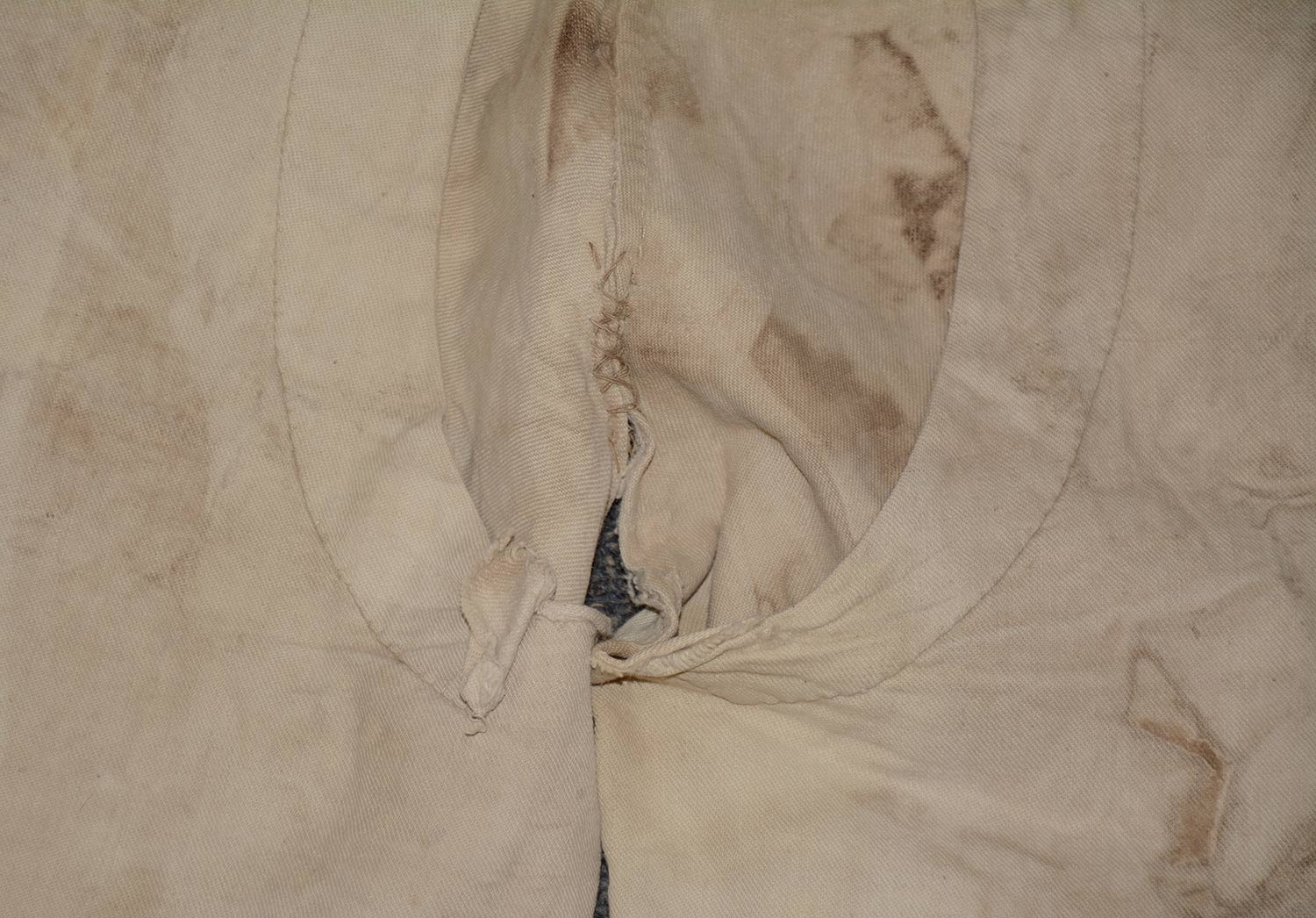
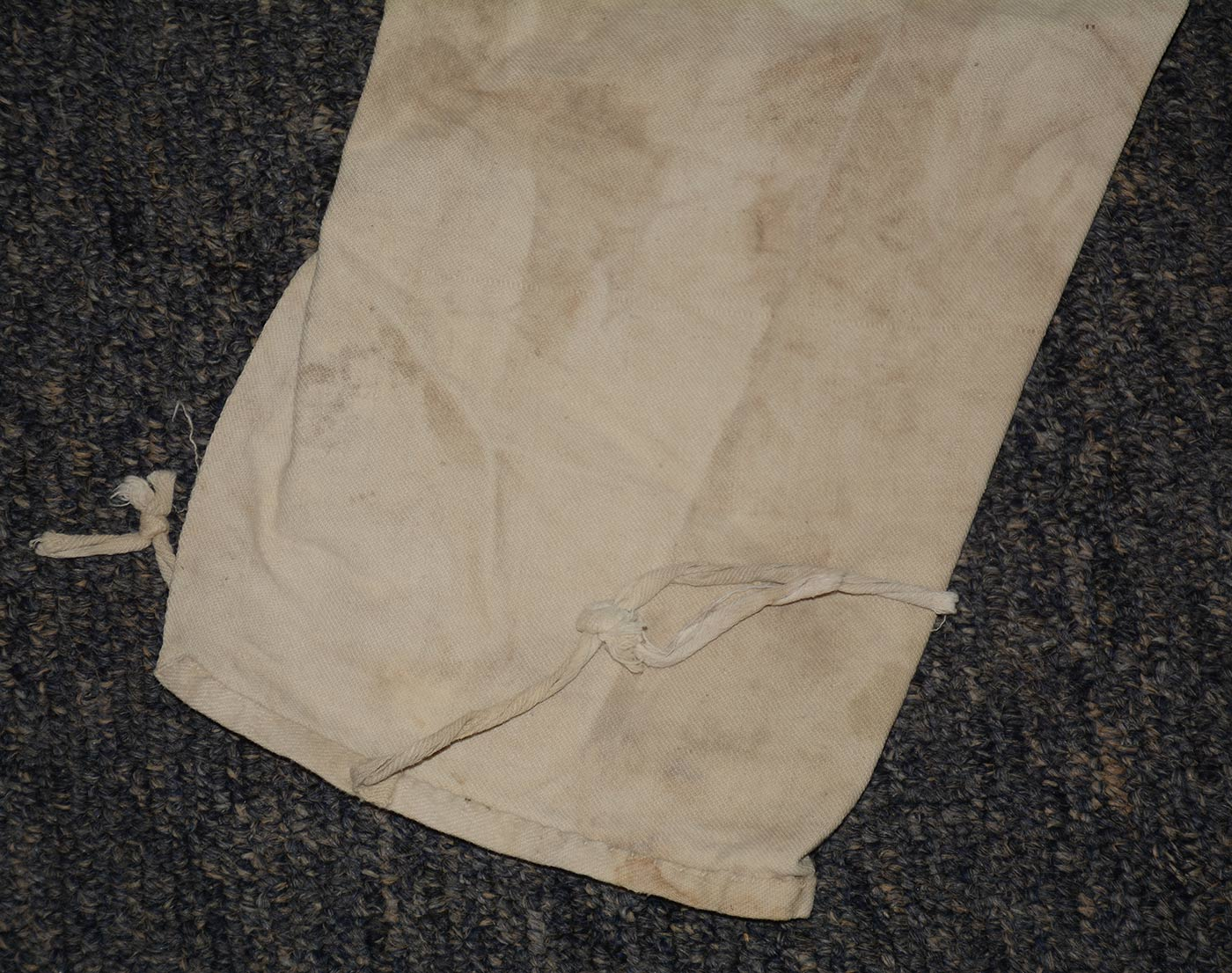
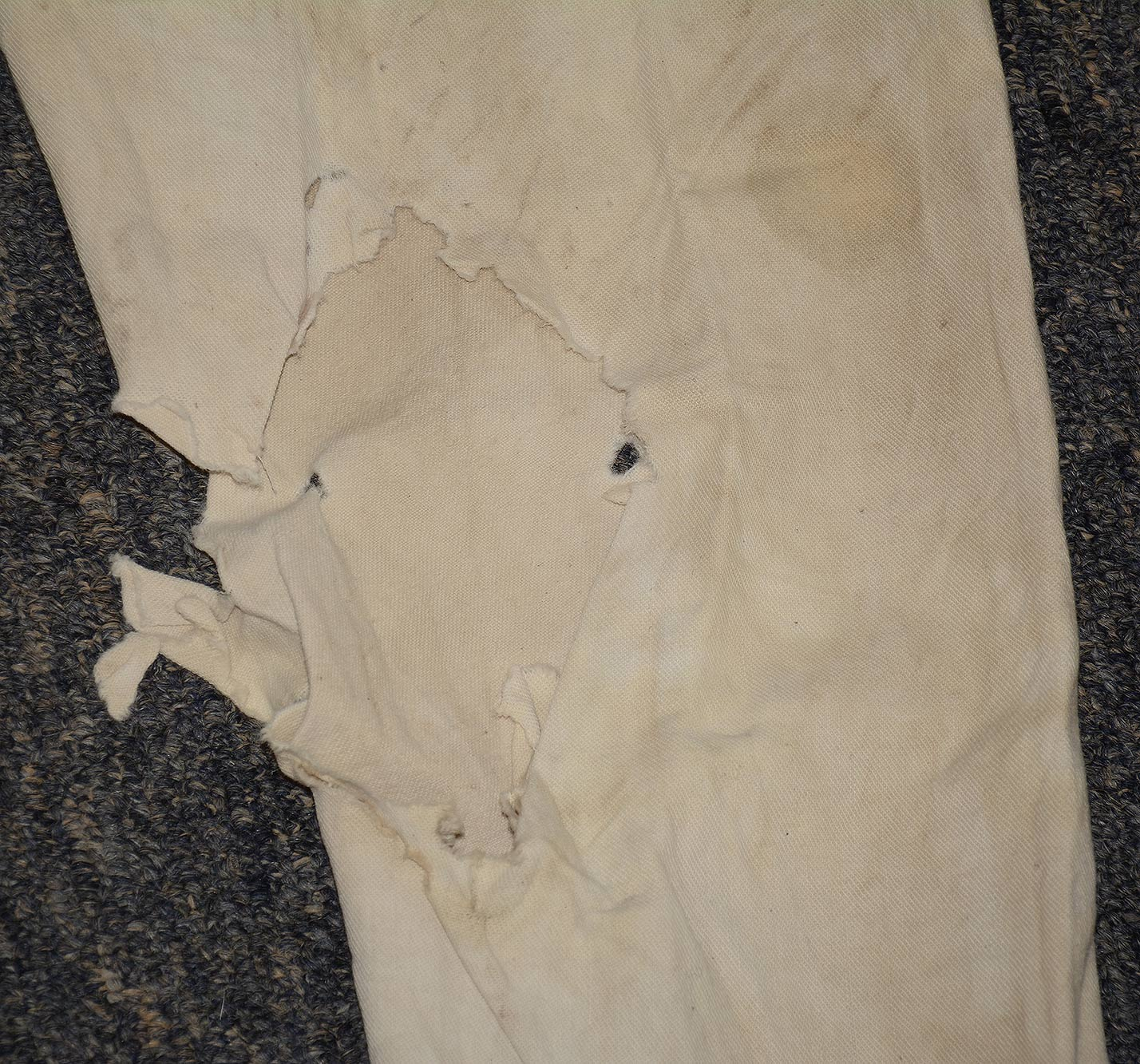
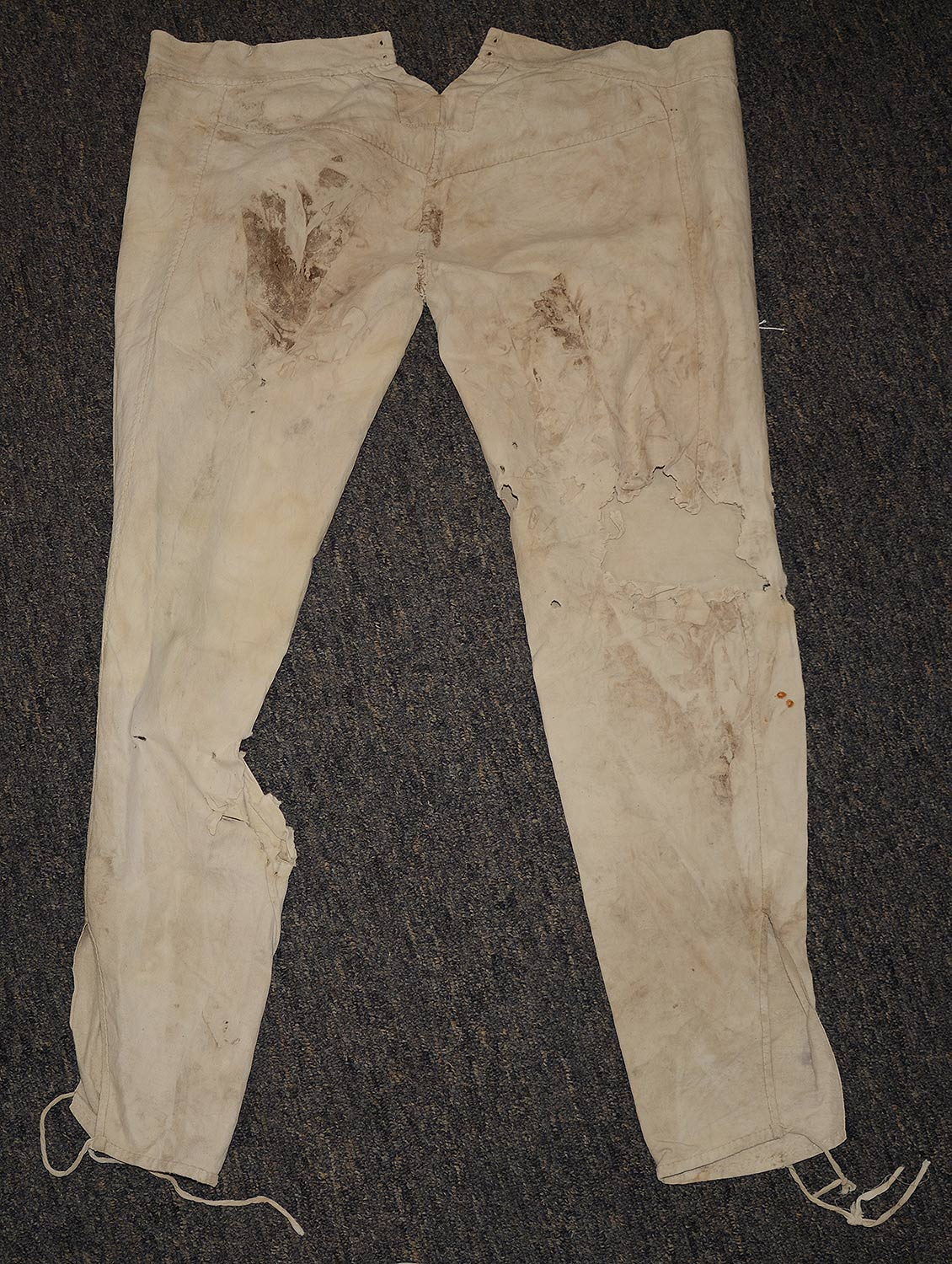
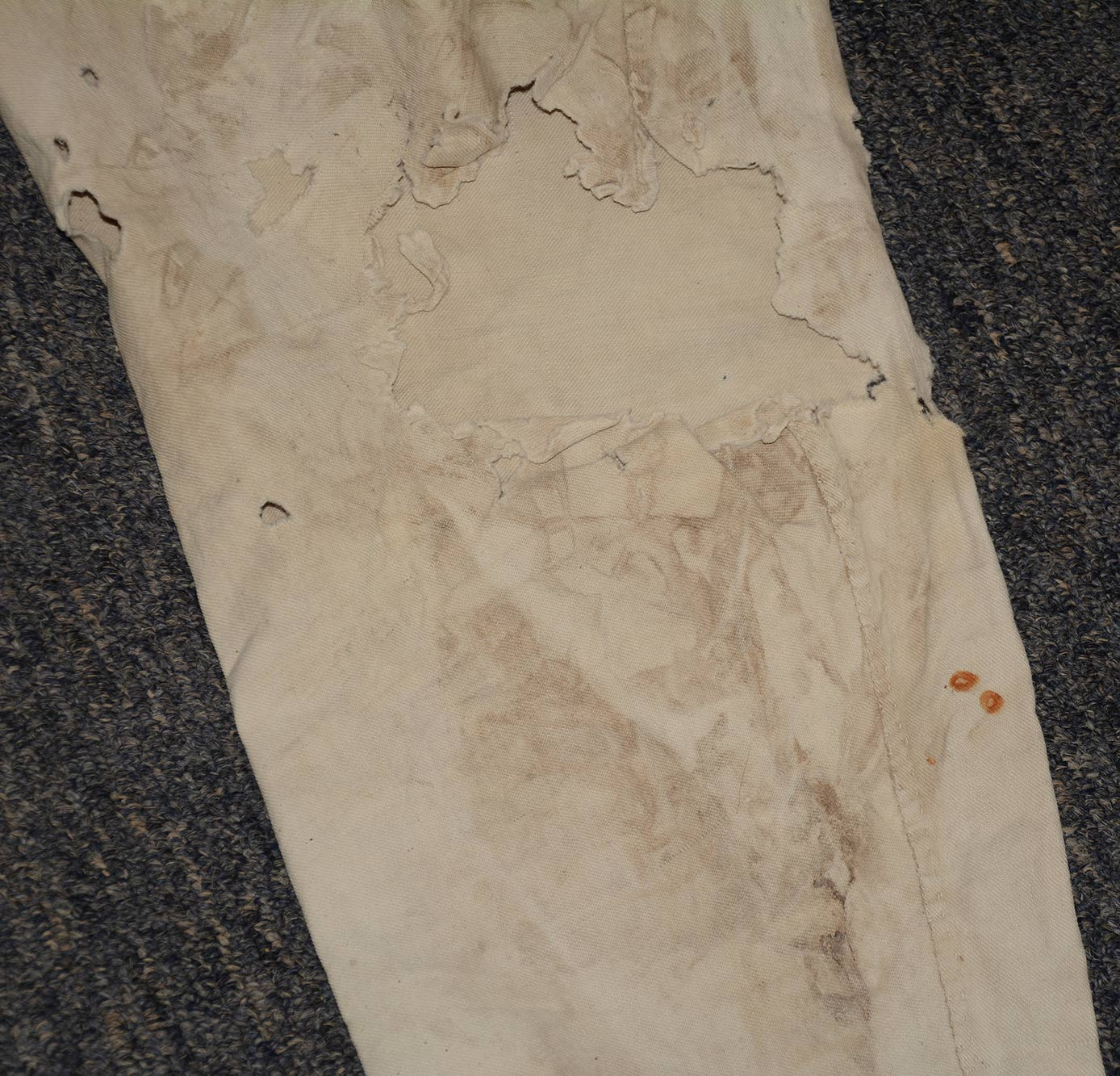
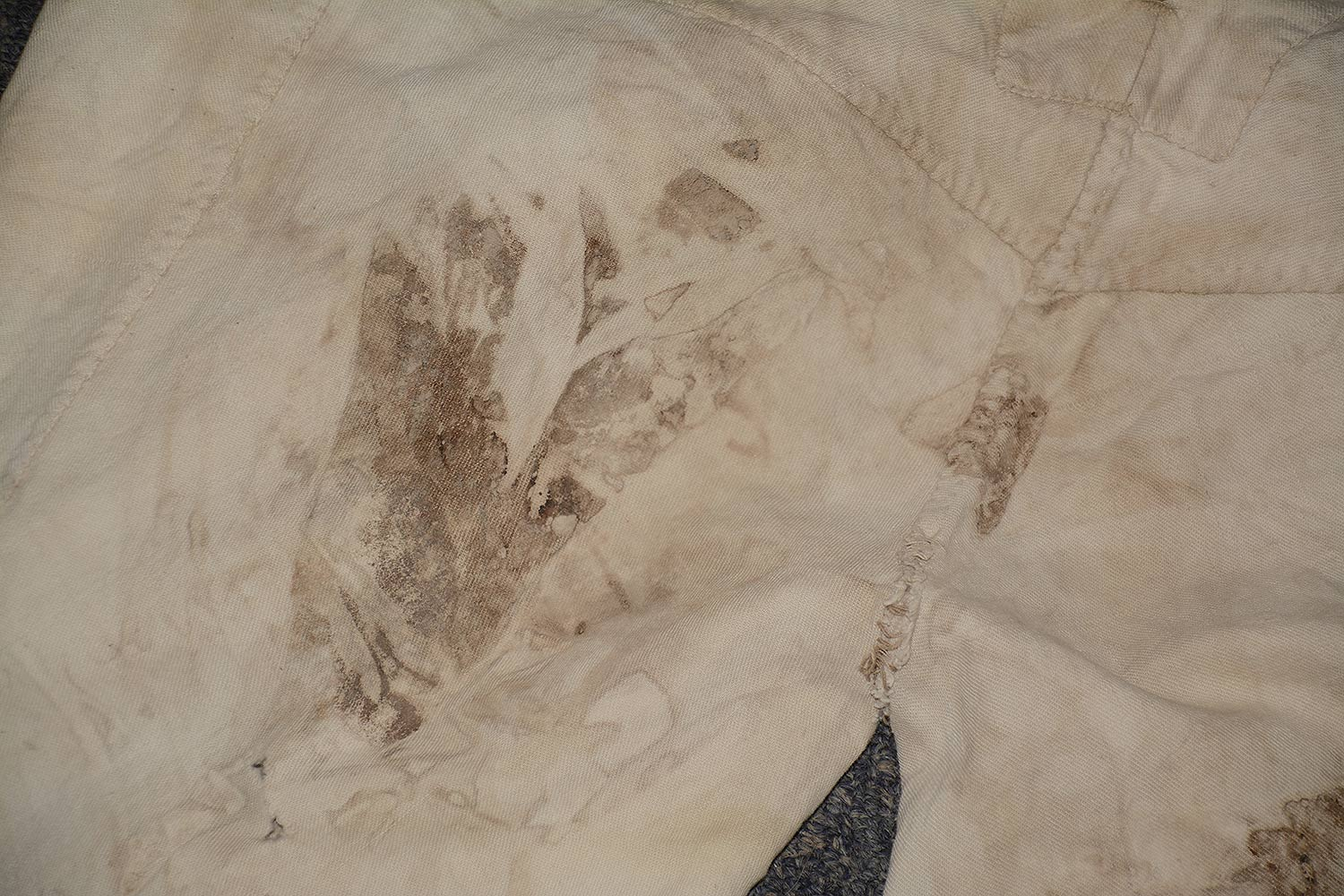
$5,500.00
Quantity Available: 1
Item Code: 1052-255
Shipping: Determined by Method & Location of buyer
To Order:
Call 717-334-0347,
Fax 717-334-5016, or E-mail
Civil War army-issue undergarments are extremely rare. They were made and issued in huge numbers, but were characteristically cheaply made, often disliked, and hardly worth preservation as a cherished relic of wartime service. Very few survive even though Osman estimated US purchases of drawers at 11 million, with hundreds of thousands more made at clothing depots. Most were cotton flannel, but there were some knit, domet flannel, or other types specified in individual contracts. They were ankle length, fitted with cloth ties at the slit ankles to keep them from riding up, fastened by two buttons at the waist and laced across the open V at the rear of the waistband through sewn grommet holes for adjustment, They were issued in three sizes, which were often all too small, in one weight of material that was often too hot in warm weather and not warm enough in cold. Many troops thus relied on private purchases or dispensed with them altogether. A study of a company of the 33rd Mass. on campaign indicated perhaps one man in three was not drawing issue drawers.
This pair looks like it came out of a veteran soldier’s effects in descendant’s attic, but in fact comes from excavations at Fort Pembina, ND, conducted on private property with the owner’s permission. The anaerobic soil conditions have yielded cloth and leather gear in remarkable states of preservation. (One thinks of the Vindolanda excavations in Britain, producing 2,000 year-old Roman sandals in excellent condition.) These have been cleaned, but not repaired or conserved, and are substantially intact, showing a ripped seam in the crotch and some small holes and one large one each at the sides and backs of the knees, likely the reason they were discarded. They show very close to their original white with just some thin charcoal colored stains on the front left, left hip, and a smaller area on the right hip. The left leg has a ragged hole toward the inside about 4 by 5 inches at the upper calf or lower knee. The right leg has a similar hole on the back, just above the knee. The seam of the crotch is open for about 4 ½ inches from the front, the lower seam of the fly having opened, but there is no material missing and the inside shows a period attempt at resewing it. The two tin buttons are firmly in place on the waistband, which is 2 inches wide at the front and tapers only slightly to 1 3/8 inches at the very back. The cloth ties are present at the ankles, though broken. The ankles are correctly hemmed and split for about 6 ¾ inches with one of each pair of ties set back about 2 inches so they can be overlapped. As is correct, the fly, which measures 9 inches from the lower edge of the waistband, has no buttons, and is faced on the front with a 1 ¼ inch strip of fabric that tapers slightly at the crotch.
The ink maker and inspector stamps (sometimes on the seat and back of the calf) are long gone and the large numbers of drawers made by so many different manufacturers makes it tough to pin these down to a specific maker or depot, but these have some similarity to the Danish Exchange pair, made at Schuylkill Arsenal and part of an 1858 exchange of military material. Like this pair, this has legs seamed down the outer edge, a more-or-less straight waistband, and uses a relatively shallow yoke across the seat, typical of Schuylkill infantry trousers. The V-cut at the back is 4 inches long from the top of the waistband and reinforced by a 1 ¼ inch strip along either side extending about 1 ¼ inch below the end of the V. The yoke runs from about 1 ¼ inch down the leg seam on each side to 3 inches below the point of the V-slit, or 7 inches from the top of the waistband. A set made by New York contractor Albert Rose is illustrated in the Time Life series Arms and Equipment of the Union and diagrammed by Jim Stamatelos in Osman’s Military Collector and Historian article, but differ in having a wider waistband, no yoke on the back, and legs seamed on the inside. Probably just a few of the differences we would find if there were a significant sample of the millions made.
Fort Pembina was established in 1870 by troops of the 20th US Infantry and as is typical of the early Indian Wars regular army, their issue uniforms were Civil War surplus well into the 1870s. These drawers fit the pattern usually called the 1851 pattern, likely the same as used from about 1835 until the new pattern of 1875. In fact, adverse comments on both the size and warmth of this pattern were made in 1875 by officers of the 20th Infantry stationed in Dakota. Situated in the Red River Valley in North Dakota near the Canadian border, Ft. Pembina was in operation until 1895. Trading posts existed earlier in the area as part of the fur trade, and the first U.S. military post there was temporary- manned by a detachment of Minnesota troops in 1863-1864 following the 1862 Sioux uprising. In March 1870 a new fort was established south of the Pembina River and about 200 yards west of the Red River, completed by July and named in honor of Gen. George H. Thomas. The name was changed to Fort Pembina in September and the initial garrison consisted of two companies of the 20th US Infantry. Their main purpose was to provide security for settlers worried about Sioux returning south from Canada, but the troops spent much of their time escorting boundary surveys along the Canadian border and preventing Fenian raids heading north into Canada.
The fort included enlisted barracks, officers’ quarters, guard house, ordnance storehouse, company kitchen, root house, laundress’s quarters, quarters for civilian employees, hospital and hospital servant’s house, a barn for the “hospital cow,” quartermaster and commissary offices and storehouse, stables, wagon shed, etc. The garrison reached peak strength in 1878 of 200, but the average was about 125 enlisted men and 8 officers. An October 1885 return listed 97 men, 2 field pieces, 1 mountain howitzer, 100 rifles, 19 pistols, 23 mules, and 9 wagons. By 1890 the post had just 23 men, and after an 1895 fire destroyed some 19 buildings it was decided to abandon the fort rather than rebuild, the last detachment left in September. The property was turned over to the Interior Department and later sold in 1902.
This set of army issue drawers is largely intact and completely stable. It displays very well, is very, very scarce, and would fill a gap in just about every Civil War collection out there, private or public. It is also a scarce relic of army life on the frontier. [sr] [ph:L]
~~~~~~~~~~~~~~~~~~~~~~~~~~~~~~~~~~~
THIS ITEM, AS WITH ALL OTHER ITEMS AVAILABLE ON OUR WEB SITE,
MAY BE PURCHASED THROUGH OUR LAYAWAY PROGRAM.
CLICK HERE FOR OUR POLICIES AND TERMS.
THANK YOU!
Inquire About VERY RARE CIVIL WAR U.S. ARMY ISSUE DRAWERS
Most Popular
Historical Firearms Stolen From The National Civil War Museum In Harrisburg, Pa »
Theft From Gravesite Of Gen. John Reynolds »
Selection Of Unframed Prints By Don Troiani »
Fine Condition Brass Infantry Bugle Insignia »
Large English Bowie Knife With Sheath 1870’S – 1880’S »
Imported (Clauberg) Us Model 1860 Light Cavalry Officer's Saber »
featured item
CAVALRY OFFICER’S SABRE IDENTIFIED TO CAPTAIN MARCUS A. MOORE, 1ST MASSACHUSETTS CAVALRY
Manufactured: Newark, NJ Maker: Sauerbier, Henry Year: Early Civil War Model: Model 1840 transitional with 1860 style grip Size: 34.2 inch blade, 1.17 wide, .353 thick This sword has all true Type 1 features with the exception of the Model 1860 style… (870-159). Learn More »


